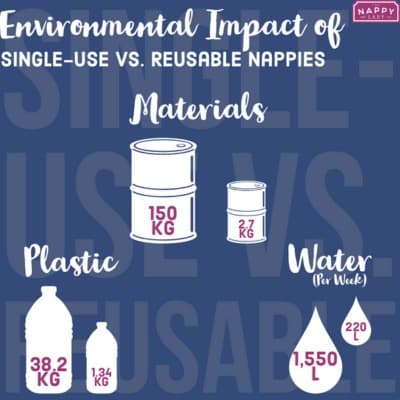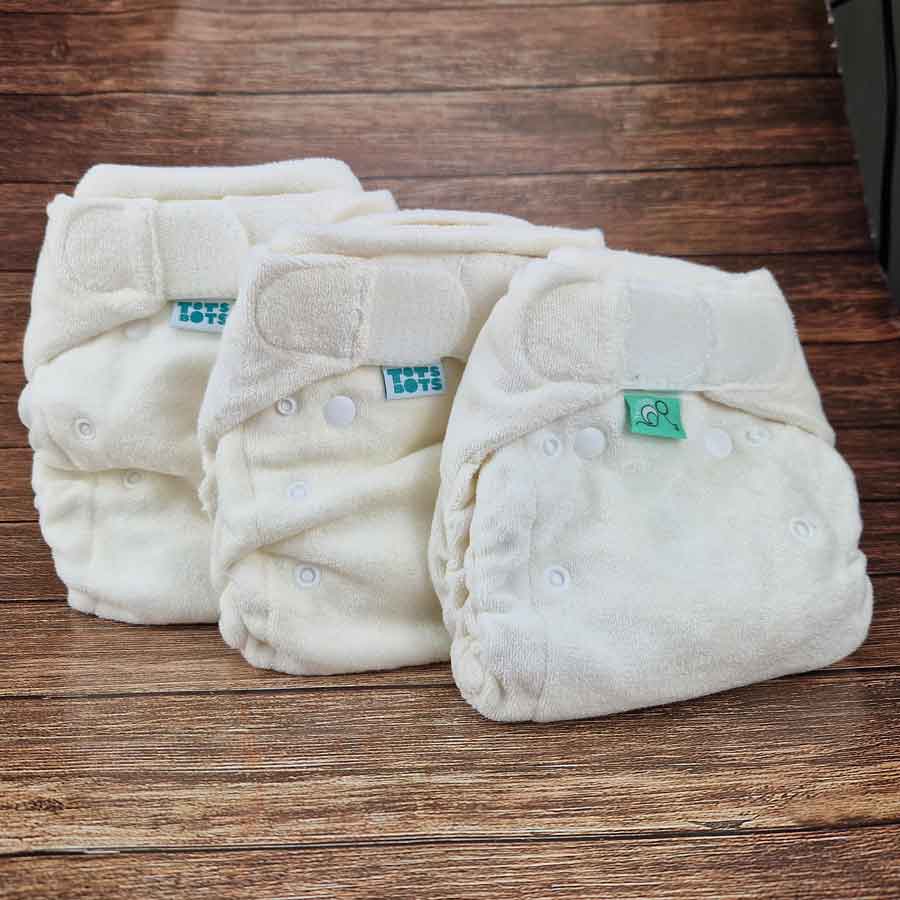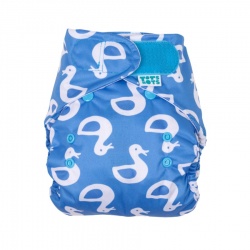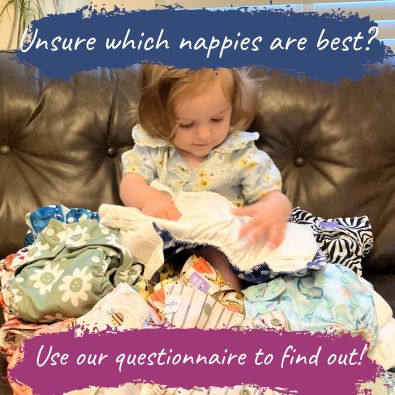Plastic: Disposable Single Use v Cloth Nappies

Are reusables nappies better for the environment?
I am very grateful to Tots Bots for supplying this article regarding the use of single use disposable nappies compared to cloth nappies. The "Blue Planet" effect has led to people finally realising that disposable nappies are another single use plastic, just the same as coffee cups and plastic straws. We've had increasing enquiries on how cloth and disposable nappies compare and this article does it very well. The cloth nappy examples used within the article are all Nappy Lady best sellers made by Tots Bots, the UK's biggest cloth nappy manufacturer. The examples however are representative of all modern cloth nappies.
Facts behind the environmental impact of disposable nappies
Whilst many folks focus entirely on the waste issue of single use plastic, it is the overconsumption of finite resources that is the actual issue. Waste is simply the by-product of this overconsumption. Consumers are now starting to switch on more and more to the issue of plastic waste, however many are still looking for excuses not to switch to reusable alternatives.
“But there are microfibres in your products…”
“What about the energy used in washing?...”
And so on.
The Environment Agency conducted a lifecycle analysis to compare the environmental impacts of reusable and disposable nappies. The report concluded that reusables are up to 40% better for the environment than their disposable counterparts. To be absolutely clear on this, the study only assessed disposables up to the point of purchase. It did not assess the post use processing of the product – refuse collection and transport (more carbon in the form of fuel) and ultimately disposal into landfill or incineration (yet more impact in terms of greenhouse gases such as methane). Reusable nappies on the other hand were assessed both for the manufacturing impacts and the post purchase consumer use from birth to potty training – of course including washing the garments.
Materials usage is also significantly higher per child:
20 x Easyfit (one piece) reusable nappies = 2.7KG
4,000 x disposables = 150KG
That’s over 98% less raw materials per child.
Disposable = Polyethylene, Polypropylene, Polyacrylate, Cellulose fluff
Reusable = Polyester, Polyurethane, Cellulose fabric - cotton, bamboo etc.
When looking specifically at the plastic content:
Disposable nappy
25% of a disposable nappy is plastic with a further 4% being adhesive.
This equated to 9.57g of plastic per nappy and ultimately 38.2Kg of plastic for disposal - based on 4000 nappy changes per baby.
Reusable nappy
Easyfit (one piece nappy) is 50% plastic (Polyester and Nylon)
This equates to 67g per nappy and ultimately 1.34Kg of plastic for disposal at end of life - based on 20 nappies birth to potty.
Further reductions in plastic waste can be achieved if parents opt for a 2 part system:
Bamboozle (2 piece fitted nappy) is 19% plastic when you look at a complete set. This equates to 600g of plastic for disposal at end of life - based on 20 nappies and 4 covers.
Most high quality reusable nappies, when cared for properly, can be used for a second child further reducing impact (2 children in disposables will result in 76.4Kg of plastic for disposal). However it is not valid to say any part of the product will not eventually end up being disposed of as they will wear out and lose function over time.
Many parents are opting to use ‘eco’ disposable nappies as a more environmentally friendly alternative to the mainstream brands. However, these products have the same impact in production and use the same amount of raw materials per child as the standard product. Claims of bio-degradability are spurious at best as the majority of the product still ends up in the regular domestic waste stream. In short it is a greenwash. If parents want to reduce their environmental impact, then reusables are the only alternative. Tots Bots 2018
The nappies used in the comparison above are found below:
.png)



